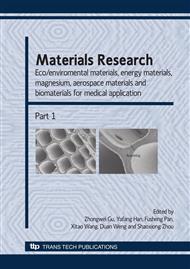p.488
p.492
p.498
p.502
p.506
p.512
p.521
p.526
p.531
Investigation on Lithiation Mechanism of Interphase Ni3Sn4 Alloy Used as Anode Material for Lithium-Ion Batteries
Abstract:
Sn-based anode materials have poor cycling performance due to mechanical fatigue caused by volume expansion during lithium insertion and extraction processes. In this work, the mechanism of lithium insertion/extraction in the Ni3Sn4 alloy electrode is investigated using the first-principle plane-wave pseudopotential and experimnetal method. The calculated results indicate that the Ni3Sn4 alloy phase has relatively minor expansion ratio and fluctuating electrochemical potential, which the tendency is consistent with the experimental result. On the other hand, the Sn-Ni alloy thin films with different tin content are prepared by electrodepostion on copper as an anode for lithium-ion batteries. The structural and electrochemical characteristics of Sn-Ni alloy are examined using X-ray diffraction (XRD) and repeated constant current charge/discharge (CC). The results show Tthheat Ni3Sn4 alloy phase has best cyclic stability during the lithium insertion and extraction processes.
Info:
Periodical:
Pages:
506-511
Citation:
Online since:
January 2009
Authors:
Keywords:
Price:
Сopyright:
© 2009 Trans Tech Publications Ltd. All Rights Reserved
Share:
Citation:


